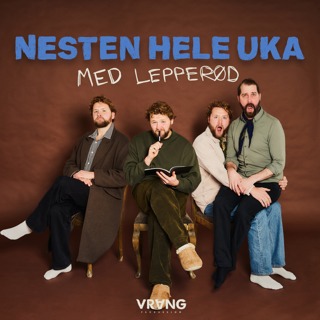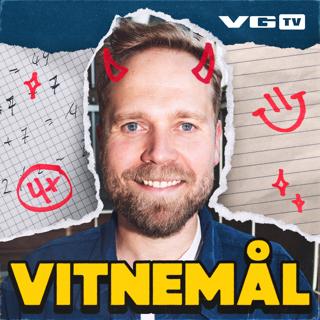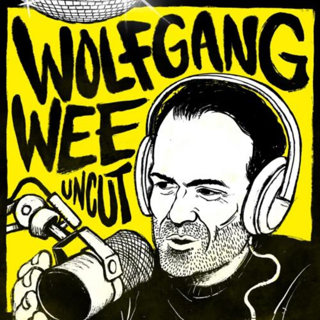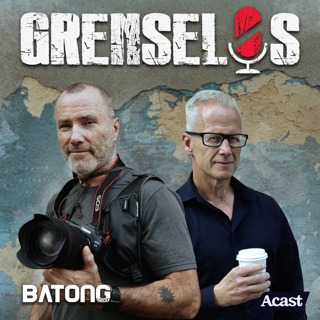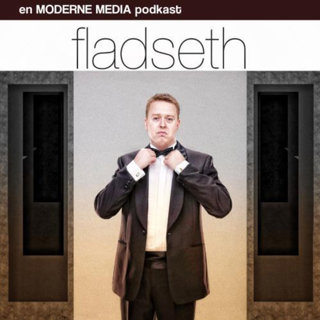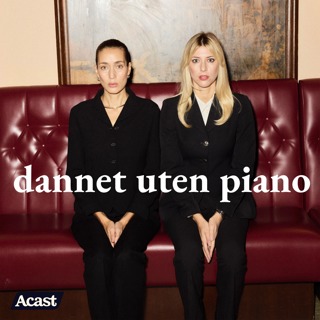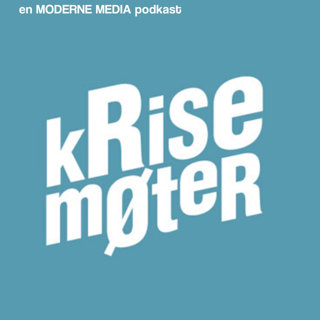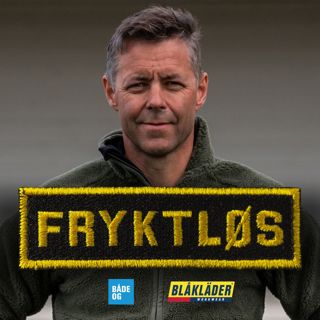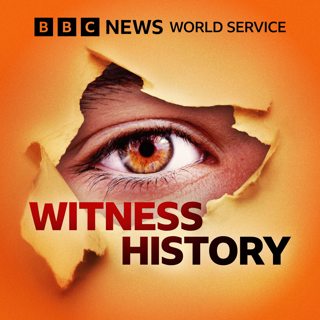
One man’s escape from McCarthyism
In 1951, at the height of the McCarthy era, a time when the US government pursued suspected communists, Victor Grossman was drafted into the army. A committed communist since his teens, he hid his political beliefs.Stationed in West Germany and under FBI scrutiny, he faced the threat of a possible court martial. To avoid prison, he fled to the Soviet Union in 1952, swimming across the Danube River.Victor tells Lizzy Kinch about his dramatic escape and life in East Germany. A Whistledown production.Eye-witness accounts brought to life by archive. Witness History is for those fascinated by the past. We take you to the events that have shaped our world through the eyes of the people who were there. For nine minutes every day, we take you back in time and all over the world, to examine wars, coups, scientific discoveries, cultural moments and much more. Recent episodes explore everything from the death of Adolf Hitler, the first spacewalk and the making of the movie Jaws, to celebrity tortoise Lonesome George, the Kobe earthquake and the invention of superglue. We look at the lives of some of the most famous leaders, artists, scientists and personalities in history, including: Eva Peron – Argentina’s Evita; President Ronald Reagan and his famous ‘tear down this wall’ speech; Thomas Keneally on why he wrote Schindler’s List; and Jacques Derrida, France’s ‘rock star’ philosopher. You can learn all about fascinating and surprising stories, such as the civil rights swimming protest; the disastrous D-Day rehearsal; and the death of one of the world’s oldest languages.(Photo: Victor Grossman. Credit: Victor Grossman)
19 Aug 10min

Spot the Dog
In 1978, British artist Eric Hill designed an interactive book about a yellow puppy for his two-year-old son, Chris.Eric had noticed Chris kept lifting up the paper he was working on to see what was underneath and it inspired him to come up with a new format for a children’s book - lift-the-flap.Since Where’s Spot? was published in 1980, more than 65 million copies of Spot books have been sold worldwide, in more than 60 languages. Rachel Naylor speaks to Eric’s son, Chris Hill.Eye-witness accounts brought to life by archive. Witness History is for those fascinated by the past. We take you to the events that have shaped our world through the eyes of the people who were there. For nine minutes every day, we take you back in time and all over the world, to examine wars, coups, scientific discoveries, cultural moments and much more. Recent episodes explore everything from the death of Adolf Hitler, the first spacewalk and the making of the movie Jaws, to celebrity tortoise Lonesome George, the Kobe earthquake and the invention of superglue. We look at the lives of some of the most famous leaders, artists, scientists and personalities in history, including: Eva Peron – Argentina’s Evita; President Ronald Reagan and his famous ‘tear down this wall’ speech; Thomas Keneally on why he wrote Schindler’s List; and Jacques Derrida, France’s ‘rock star’ philosopher. You can learn all about fascinating and surprising stories, such as the civil rights swimming protest; the disastrous D-Day rehearsal; and the death of one of the world’s oldest languages.(Photo: Eric Hill with Spot in 1984. Credit: Ted Bath / Daily Express / Hulton Archive / Getty Images)
18 Aug 10min

Pramoedya Ananta Toer: The banned author of Indonesia
In 1969, Indonesian writer Pramoedya Ananta Toer was imprisoned without trial in the notorious labour camp on Buru Island. He spent 10 years there.He is best known for his novels about the rise of Indonesian nationalism. He wrote much of his work in captivity. As he was denied pen and paper on the island, his most famous work, the Buru Quartet, began as oral storytelling. He narrated the stories to fellow prisoners until he was eventually allowed to write them down himself. His powerful story is told through archive interviews. Produced and presented by Gill Kearsley.Eye-witness accounts brought to life by archive. Witness History is for those fascinated by the past. We take you to the events that have shaped our world through the eyes of the people who were there. For nine minutes every day, we take you back in time and all over the world, to examine wars, coups, scientific discoveries, cultural moments and much more. Recent episodes explore everything from the death of Adolf Hitler, the first spacewalk and the making of the movie Jaws, to celebrity tortoise Lonesome George, the Kobe earthquake and the invention of superglue. We look at the lives of some of the most famous leaders, artists, scientists and personalities in history, including: Eva Peron – Argentina’s Evita; President Ronald Reagan and his famous ‘tear down this wall’ speech; Thomas Keneally on why he wrote Schindler’s List; and Jacques Derrida, France’s ‘rock star’ philosopher. You can learn all about fascinating and surprising stories, such as the civil rights swimming protest; the disastrous D-Day rehearsal; and the death of one of the world’s oldest languages.
15 Aug 10min

Jakarta’s ban on dancing monkeys
In 2013, Jakarta's governor moved to outlaw the use of dancing monkeys on the city’s streets.The Indonesian tradition saw macaques made to perform for passers-by - often restrained by chains and dressed in plastic masks. Campaigners said the animals were frequently subjected to harsh treatment and poor living conditions.Animal rights activist Femke den Haas played a key role in securing the ban. She tells Vicky Farncombe that it was the suffering of one particular monkey, Johnny, that spurred her to take action.Eye-witness accounts brought to life by archive. Witness History is for those fascinated by the past. We take you to the events that have shaped our world through the eyes of the people who were there. For nine minutes every day, we take you back in time and all over the world, to examine wars, coups, scientific discoveries, cultural moments and much more. Recent episodes explore everything from the death of Adolf Hitler, the first spacewalk and the making of the movie Jaws, to celebrity tortoise Lonesome George, the Kobe earthquake and the invention of superglue. We look at the lives of some of the most famous leaders, artists, scientists and personalities in history, including: Eva Peron – Argentina’s Evita; President Ronald Reagan and his famous ‘tear down this wall’ speech; Thomas Keneally on why he wrote Schindler’s List; and Jacques Derrida, France’s ‘rock star’ philosopher. You can learn all about fascinating and surprising stories, such as the civil rights swimming protest; the disastrous D-Day rehearsal; and the death of one of the world’s oldest languages.(Photo: A dancing monkey in Jakarta. Credit: Getty Images)
14 Aug 10min

Discovery of the 'Hobbit'
In 2003, archaeologists on the island of Flores, in Indonesia, discovered the skeleton of a new species of human - Homo floresiensis.It was nicknamed the 'Hobbit', because they were just over a metre in height, and it's thought they became extinct around 70,000 years ago. Rachel Naylor spoke to Peter Brown, the Australian paleoanthropologist who identified it. Eye-witness accounts brought to life by archive. Witness History is for those fascinated by the past. We take you to the events that have shaped our world through the eyes of the people who were there. For nine minutes every day, we take you back in time and all over the world, to examine wars, coups, scientific discoveries, cultural moments and much more. Recent episodes explore everything from the death of Adolf Hitler, the first spacewalk and the making of the movie Jaws, to celebrity tortoise Lonesome George, the Kobe earthquake and the invention of superglue. We look at the lives of some of the most famous leaders, artists, scientists and personalities in history, including: Eva Peron – Argentina’s Evita; President Ronald Reagan and his famous ‘tear down this wall’ speech; Thomas Keneally on why he wrote Schindler’s List; and Jacques Derrida, France’s ‘rock star’ philosopher. You can learn all about fascinating and surprising stories, such as the civil rights swimming protest; the disastrous D-Day rehearsal; and the death of one of the world’s oldest languages.(Photo: The skull of Homo floresiensis (centre). Credit: Jim Watson / AFP via Getty Images)
13 Aug 10min

Borobudur Temple
In 1983, Borobudur Temple in Indonesia reopened. The worlds’ largest Buddhist monument is in the shadows of an active volcano and was once lost to the jungle. In 1973, major restoration work started on the temple. One of the workers on the project, Werdi, explains his role in the restoration and describes why the temple has left a deep impression on him. Presented by Gill Kearsley and produced by Daniel Raza.Eye-witness accounts brought to life by archive. Witness History is for those fascinated by the past. We take you to the events that have shaped our world through the eyes of the people who were there. For nine minutes every day, we take you back in time and all over the world, to examine wars, coups, scientific discoveries, cultural moments and much more. Recent episodes explore everything from the death of Adolf Hitler, the first spacewalk and the making of the movie Jaws, to celebrity tortoise Lonesome George, the Kobe earthquake and the invention of superglue. We look at the lives of some of the most famous leaders, artists, scientists and personalities in history, including: Eva Peron – Argentina’s Evita; President Ronald Reagan and his famous ‘tear down this wall’ speech; Thomas Keneally on why he wrote Schindler’s List; and Jacques Derrida, France’s ‘rock star’ philosopher. You can learn all about fascinating and surprising stories, such as the civil rights swimming protest; the disastrous D-Day rehearsal; and the death of one of the world’s oldest languages.(Photo: Borobudur. Credit: David Cumming/Eye Ubiquitous/Universal Images Group via Getty Images)
12 Aug 10min

The Santa Cruz Massacre
On 12 November 1991, Indonesian troops opened fire on independence activists in East Timor's capital, Dili.During a protest march to the Santa Cruz cemetery after a memorial service for an independence supporter, Indonesian troops opened fire, killing 271 people.In 2015, Marco Silva spoke to British cameraman Max Stahl who filmed the attack on unarmed demonstrators.Eye-witness accounts brought to life by archive. Witness History is for those fascinated by the past. We take you to the events that have shaped our world through the eyes of the people who were there. For nine minutes every day, we take you back in time and all over the world, to examine wars, coups, scientific discoveries, cultural moments and much more. Recent episodes explore everything from the death of Adolf Hitler, the first spacewalk and the making of the movie Jaws, to celebrity tortoise Lonesome George, the Kobe earthquake and the invention of superglue. We look at the lives of some of the most famous leaders, artists, scientists and personalities in history, including: Eva Peron – Argentina’s Evita; President Ronald Reagan and his famous ‘tear down this wall’ speech; Thomas Keneally on why he wrote Schindler’s List; and Jacques Derrida, France’s ‘rock star’ philosopher. You can learn all about fascinating and surprising stories, such as the civil rights swimming protest; the disastrous D-Day rehearsal; and the death of one of the world’s oldest languages.(Photo: The Santa Cruz cemetery. Credit: Giulio Paletta/UCG/Universal Images Group via Getty Images)
11 Aug 9min

1965 Singaporean independence
On 9 August 1965 Singapore announced it had left the Federation of Malaysia and become an independent sovereign state. Explaining the separation at a news conference, the prime minister, Lee Kuan Yew, was overcome with emotion.Fifty years later in 2015, Catherine Davis spoke to Manjeet Kaur who was 15-years-old when Singapore became independent. Eye-witness accounts brought to life by archive. Witness History is for those fascinated by the past. We take you to the events that have shaped our world through the eyes of the people who were there. For nine minutes every day, we take you back in time and all over the world, to examine wars, coups, scientific discoveries, cultural moments and much more. Recent episodes explore everything from the death of Adolf Hitler, the first spacewalk and the making of the movie Jaws, to celebrity tortoise Lonesome George, the Kobe earthquake and the invention of superglue. We look at the lives of some of the most famous leaders, artists, scientists and personalities in history, including: Eva Peron – Argentina’s Evita; President Ronald Reagan and his famous ‘tear down this wall’ speech; Thomas Keneally on why he wrote Schindler’s List; and Jacques Derrida, France’s ‘rock star’ philosopher. You can learn all about fascinating and surprising stories, such as the civil rights swimming protest; the disastrous D-Day rehearsal; and the death of one of the world’s oldest languages.(Photo: Lee Kuan Yew, Prime Minister of Singapore, announcing secession from the Federation of Malaysia. Credit: John Cantwell/AP Photo)
8 Aug 10min







